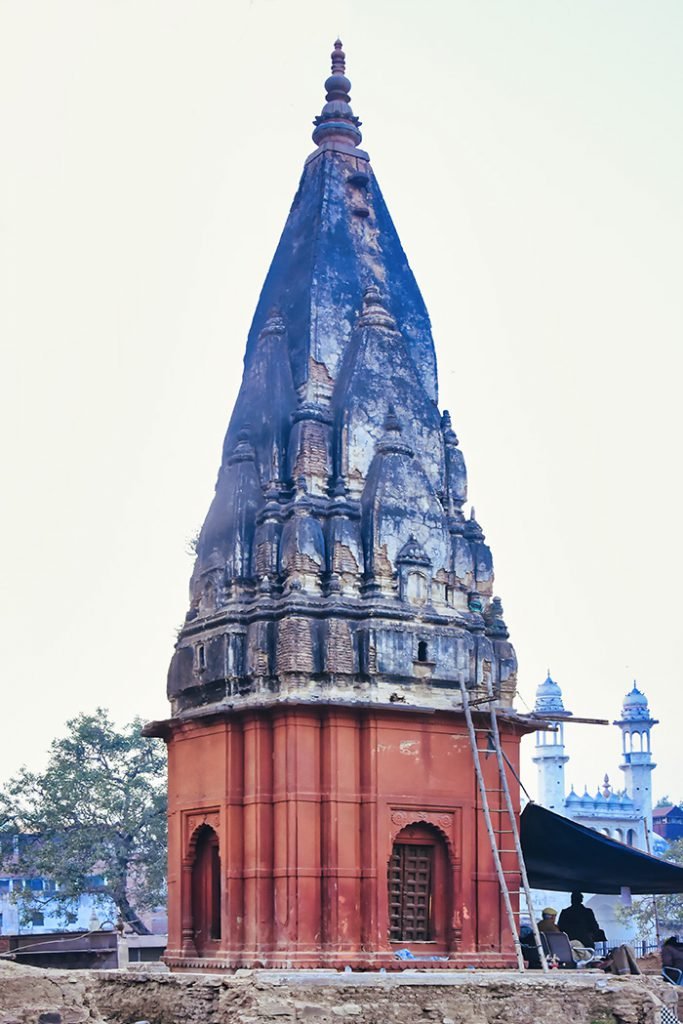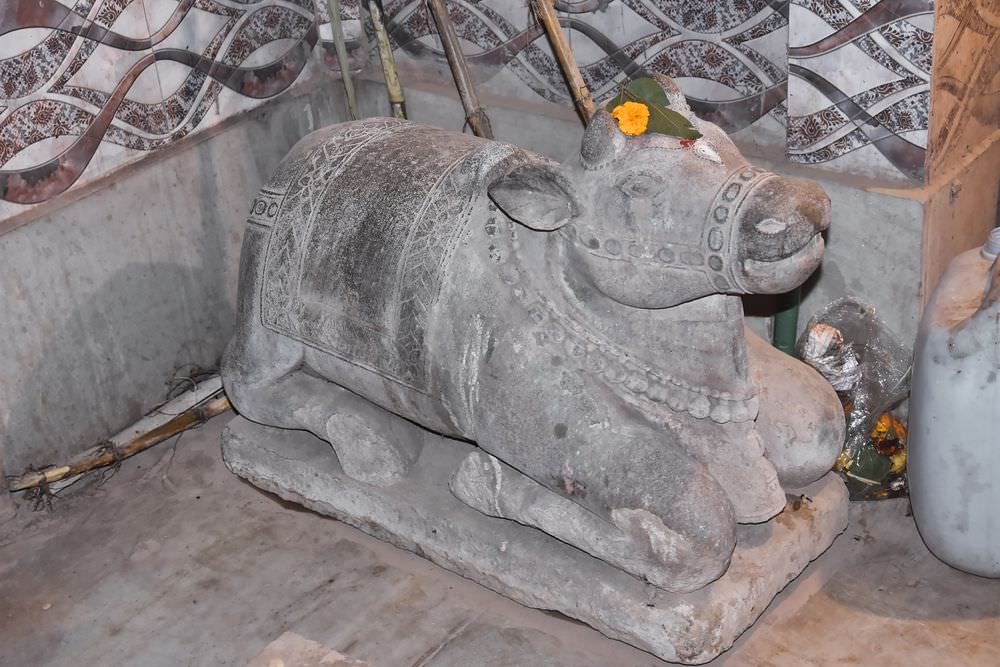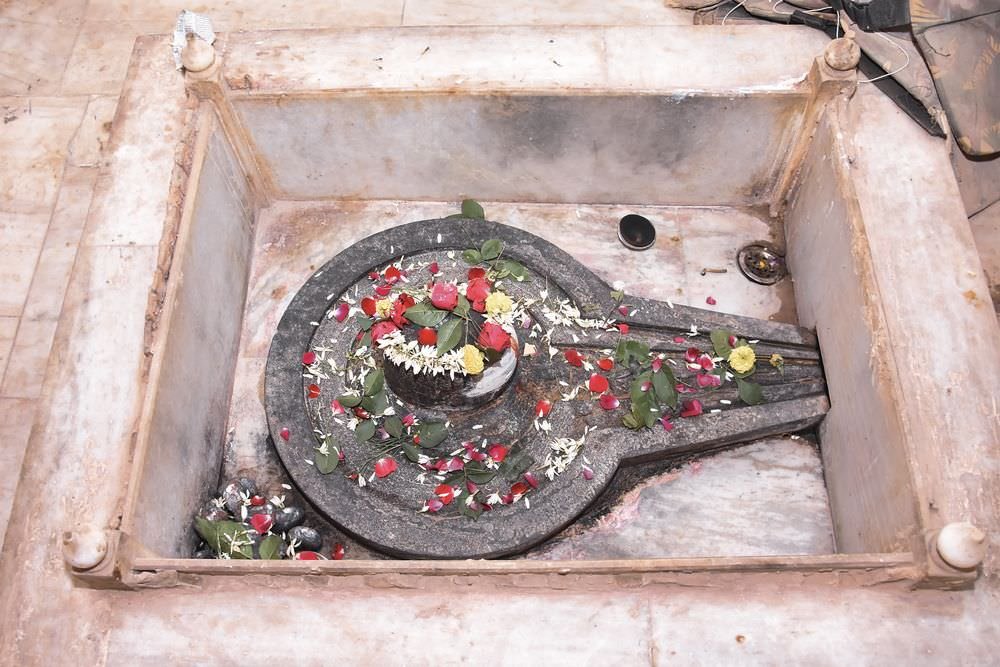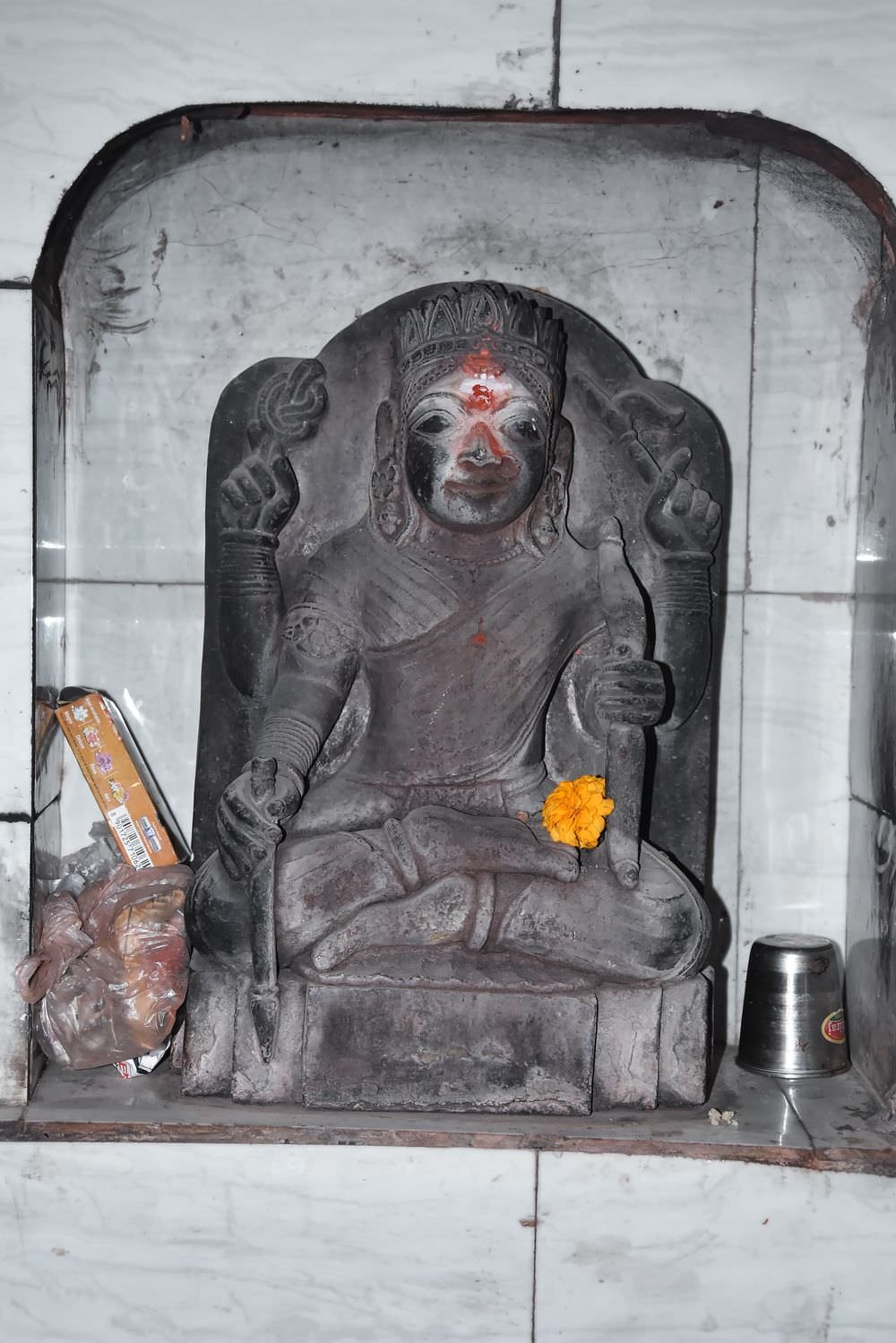The simple, small shrine of Akucheshwar is dedicated to Lord Shiva. The shrine has a garbhagriha (sanctum sanctorum) which is of a sarvatobhadra type (open on all four sides).

The simple, small shrine of Akucheshwar is dedicated to Lord Shiva. The shrine has a garbhagriha (sanctum sanctorum) which is of a sarvatobhadra type (open on all four sides).
The walls are stark but present a series of projections. Horizontal plain bands run across each face balancing out the prominent verticality of the temple. At the very bottom and below the chhajja is the characteristic patravalli (lotus bud fringe). Though the external walls of the shrine are devoid of sculptures, its beauty lies in the regal and understated doorways. The design of the doorway reflects the aesthetics of medieval Islamic architecture which was emulated by the Rajputs and Marathas as well. The pancharatha edifice has an arch within a rectangular panel on the bhadra (central projection) of each façade. A rectangular door is set in a recess within the arch. The cusped arch springs from engaged Shahjahani baluster columns, culminating in a single flower at the apex. Tendril-like vegetal pattern curls along the cusped edges, further enhancing the delicate nature of the arch. The spandrels of the arch sport lotus medallions with delicately undulating petals. The columns rest on inverted lotus bases. The lower part of the fluted shaft is composed of a lightly-rounded ghatapallava and tapers gradually upwards to terminate in a lotiform capital.’
The chajja (eave) separates the jangha (walls of the temple) and the shikhara (spire), which at present is damaged at several places. The urahshringas (half-spires) of the shekhari shikhara spring high along the central axis, surrounded by karna shringas (corner spires). The rathas of the first storey of the shikhar have simple arched windows framed with a border of acanthus leaf pattern. Above this on the urahshringas of the next storey are blind arches supported on baluster columns. The crowning elements of the mulashringa consist of amalaka (circular ribbed disc stone), inverted padma (lotus) on which a big kalasha (pot) is placed, a smaller kalasha and finally a bijapuraka. The plaster of the shikhara has flaked from many places and bricks are exposed. The structure is in danger of further degradation due to environmental conditions and growth of vegetation.

Urahshringas on the shikhara, Akucheshwar Temple, Varanasi

Nandi, garbhagriha, Akucheshwar Temple, Varanasi
Inside the garbhagriha, a stone Shivalinga is placed at the center in a shallow marble tank. In one corner of the garbhagriha, a sculpture of Nandi is kept. The walls of the sanctum are plain but for the niches that contain images of gods and goddesses. It is interesting to note that the roof of the garbhagriha has a dome instead of a flat ceiling. The ancient trabeate system of carrying the heavy load of the shikhara was not employed. Instead the square walls transform into an octagonal drum by means of squinches to support the ribbed dome.

Domed ceiling, garbhagriha, Akucheshwar Temple, Varanasi

Shiva linga inside the garbhagriha, Akucheshwar Temple, Varanasi
The sculptures which are placed in the garbhagriha, include a four-armed Surya who is shown seated on a chariot driven by horses. The charioteer, Arun, is shown in anjali mudra (folded hands) at the center. Surya holds lotuses in his upper hands. His lower right hand is in varada hasta (boon- giving gesture) and the lower left holds a shankha (conch). He wears a mukuta (crown) and a halo is carved behind his head.

Surya, Akucheshwar Temple, Varanasi
There is a marble sculpture of Kartikeya, identified by his vahana (vehicle), peacock, carved at the bottom. Four-armed, three-headed Kartikeya is shown seated, holding a khadaga (sword) in his upper right hand, a bow in his upper left while the lower hands are holding unidentified objects. Sculpture of Vishnu with Lakshmi is also placed inside the garbhagriha. Four-armed Vishnu is seen with an arm around Lakshmi. His lower right hand is held in varada hasta, his upper arms carry a padma and shankha in the right and left side respectively.

Kartikeya and Vishnu-Lakshmi, Akucheshwar Temple, Varanasi

Unidentified goddess, Akucheshwar Temple, Varanasi
A sculpture of a goddess is placed in one of the niches. The four-armed goddess is shown seated, holding a dhanush (bow) and baan (arrow) in her lower hands, ankush (goad) and an unidentified object in her upper hands. She is wearing a mukuta, earrings, necklace, armbands, bangles and anklets. Two more marble sculptures are found in the garbhagriha. Both the sculptures are mutilated.
Akucheshwar temple is significant for an understanding of the typical architecture of Banaras which emerged under the Marathas when the city was restored. The temple is not made of stone but bricks and cement plaster has been used. The plaster of the shikhara is flaked from many places and bricks are getting damaged due to environmental conditions and growth of vegetation.